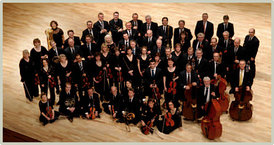 What do these people really want?
What do these people really want? He failed to provide an answer – yet the way he framed the question was insightful. In order to understand why people behave they way they do, you need to know what they’re trying to achieve.
Perhaps a hypnotist could be smuggled into a League of American Orchestras convention. By swinging his pocket-watch in front of the LAO delegates and saying, “You are getting sleepy, very sleepy,” he might get to the bottom of the matter.
And how would the entranced delegates respond when asked, “What do you honestly want for your orchestra?”
I suspect that many might say something like this: “We want to carry on with what we view as our primary artistic commitment, which is playing acknowledged European masterpieces of the 18th and 19th centuries. Furthermore, we want to maintain the traditions of classical concerts. We want to play in fine halls with excellent acoustics and gilt trim, before a large and loyal audience of middle-class people. In order to do all this, we would like generous funding from private and public sources. And one more thing – we’d also like a recording contract with Deutsche Grammophon.”
Yet it seems that nobody is willing to be quite so honest in public. Orchestras are image-conscious: they want to please everyone, and they know how to say all the right things. They know that publicly affirming their desire to resist change as much as possible is not currently fashionable or politically correct.
Indeed, there seems to be no lack of pragmatists in the orchestral world who are willing to stand up and say things like “the old models aren’t working any more.” That’s all well and good – but there’s a huge gap between changing something because you have to and changing something because you want to. (And the public can tell the difference.)
As a result, orchestras sometimes say one thing and do another. They may say they are “unique” – and then present season after season of tried-and-true repertoire, packaged in the traditional “overture + concerto + symphony = concert” formula. They may say they are “forward looking” and then perform only a smattering of new works. They may say they are “appealing to younger audiences” and then walk out on stage in 100-year-old penguin suits.
It’s my belief that not much will really change until a critical mass of people inside the orchestral world – players, conductors, administrators and boards of directors – truly want things to change. Until innovation becomes a widely and deeply embraced goal, we can expect plenty of smoke and mirrors.
© Colin Eatock 2013
 RSS Feed
RSS Feed

